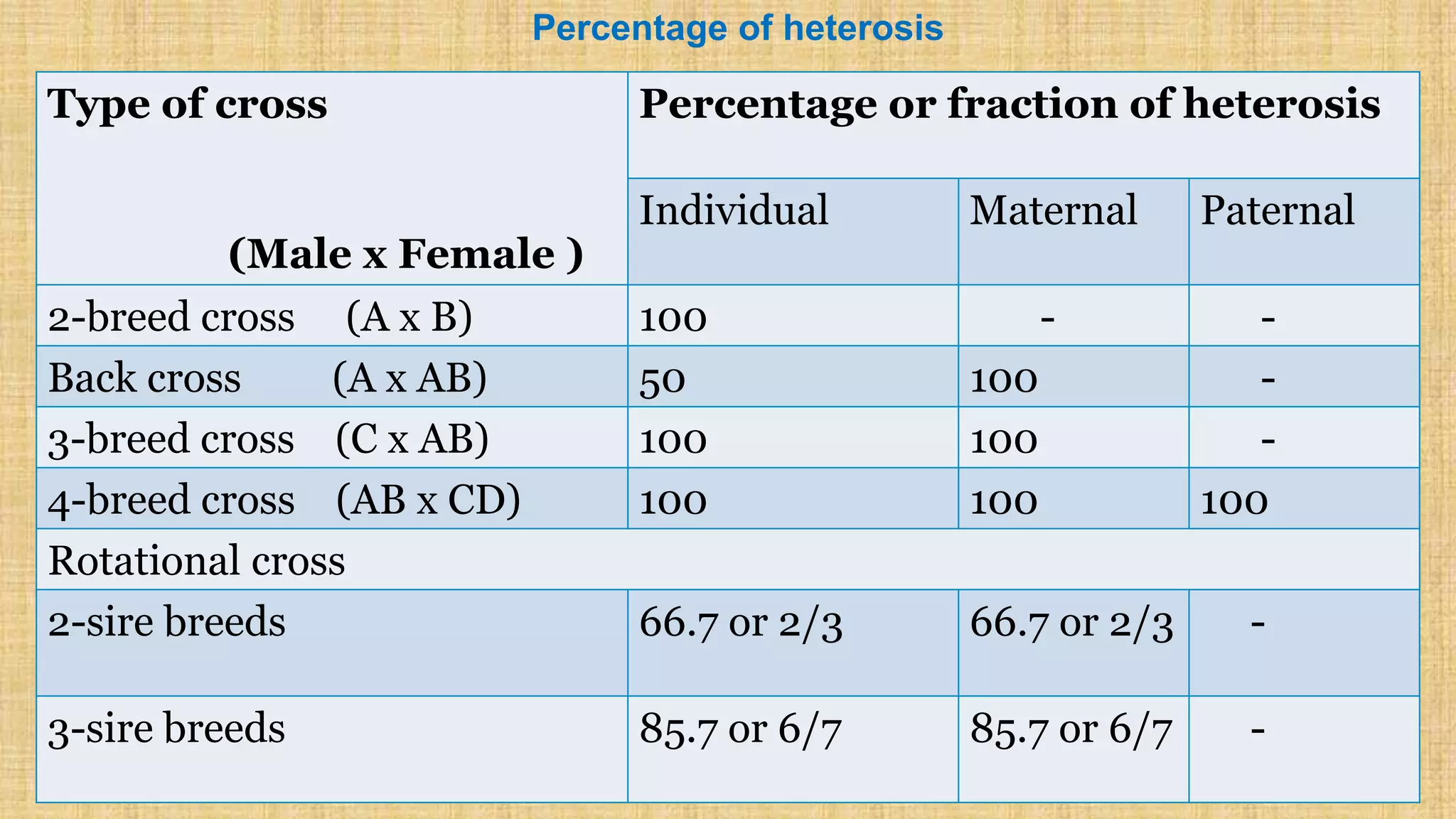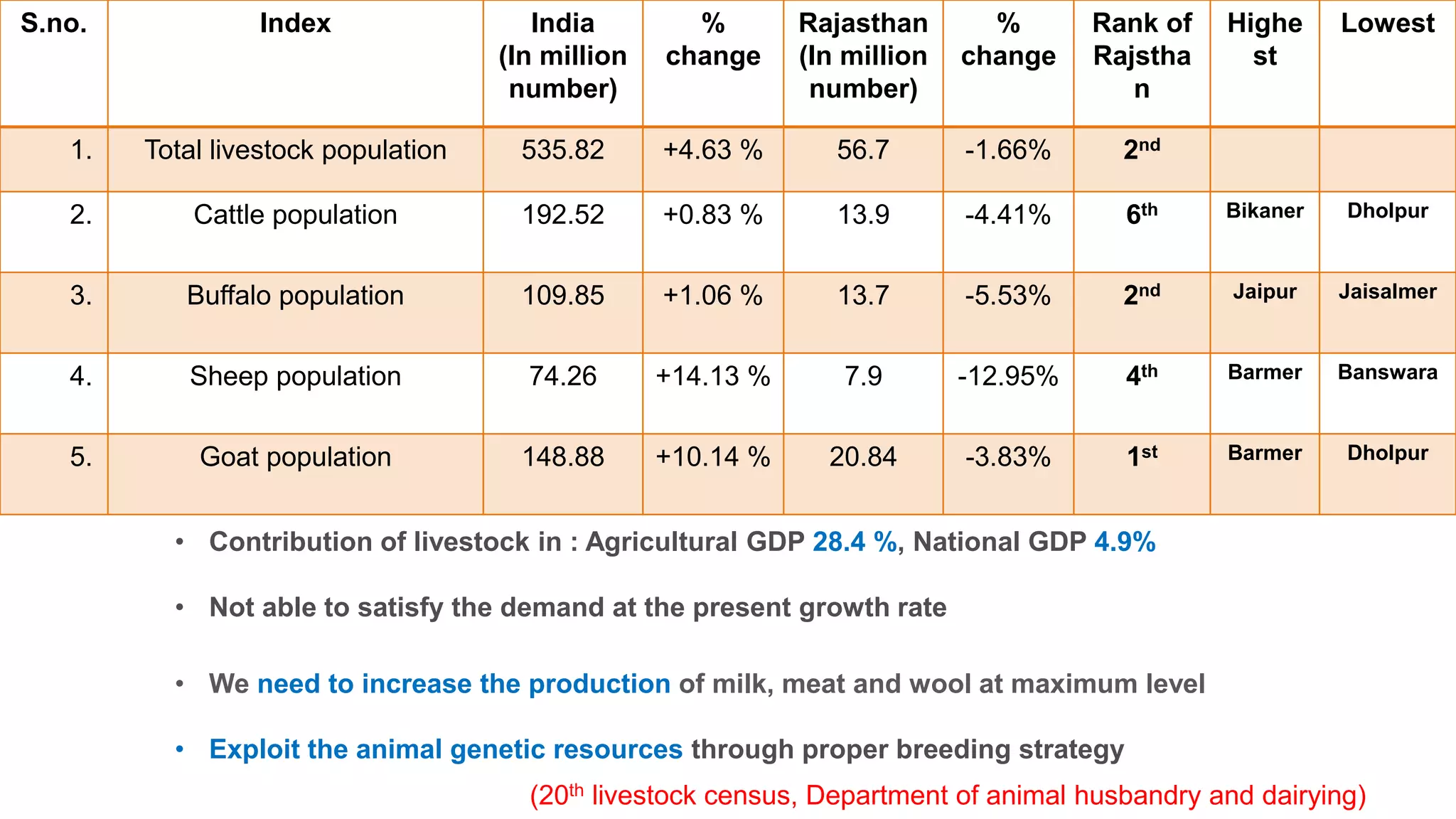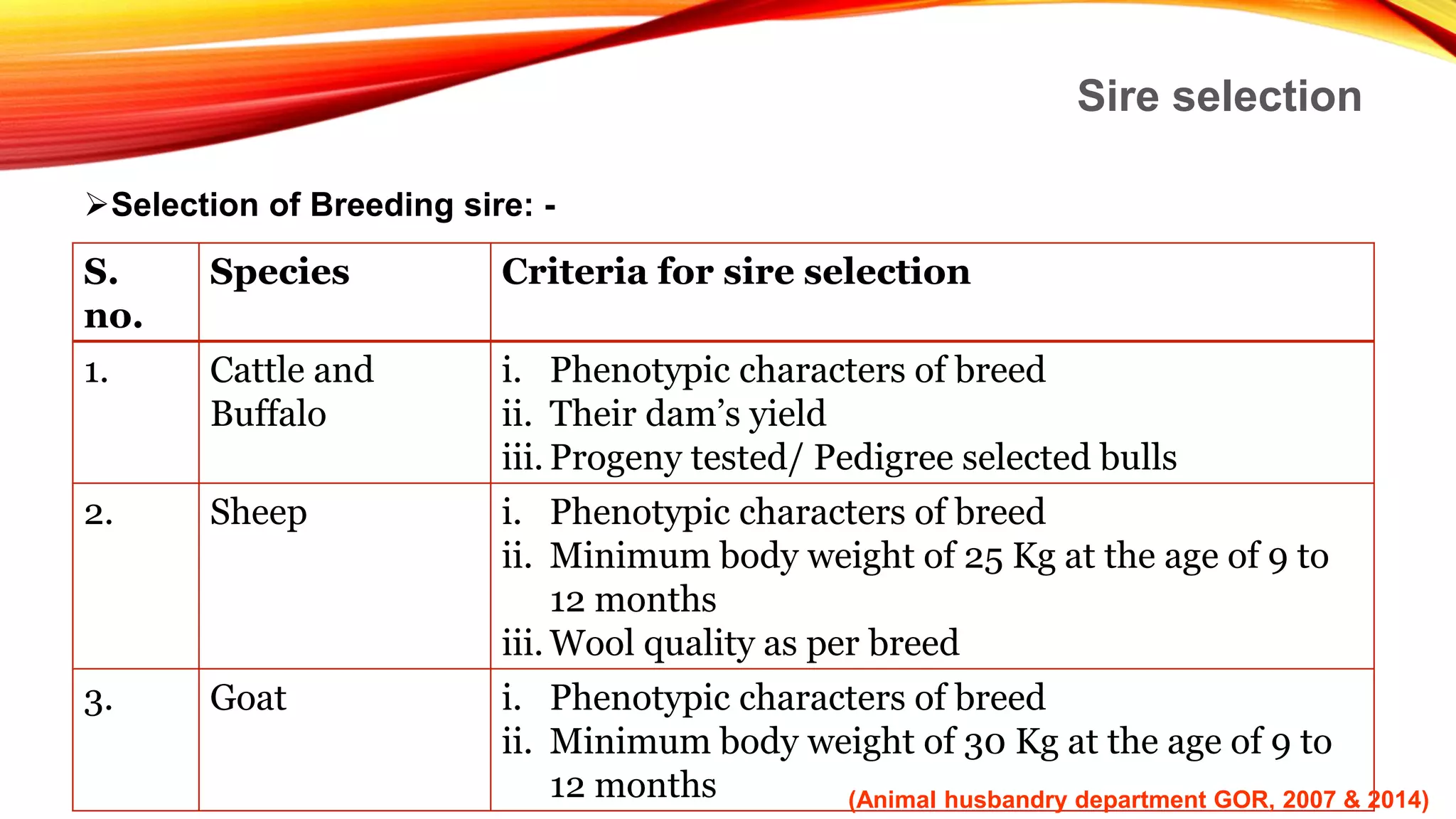The document outlines the mating systems and livestock breeding policy in Rajasthan, detailing various strategies including selective breeding, crossbreeding, and inbreeding, as well as their genetic implications. It emphasizes the importance of improving livestock productivity through targeted breeding practices for cattle, buffalo, sheep, and goats. The report also provides statistics on livestock production in Rajasthan compared to India, highlighting its significant contributions and the need for enhanced breeding strategies to meet growing demands.


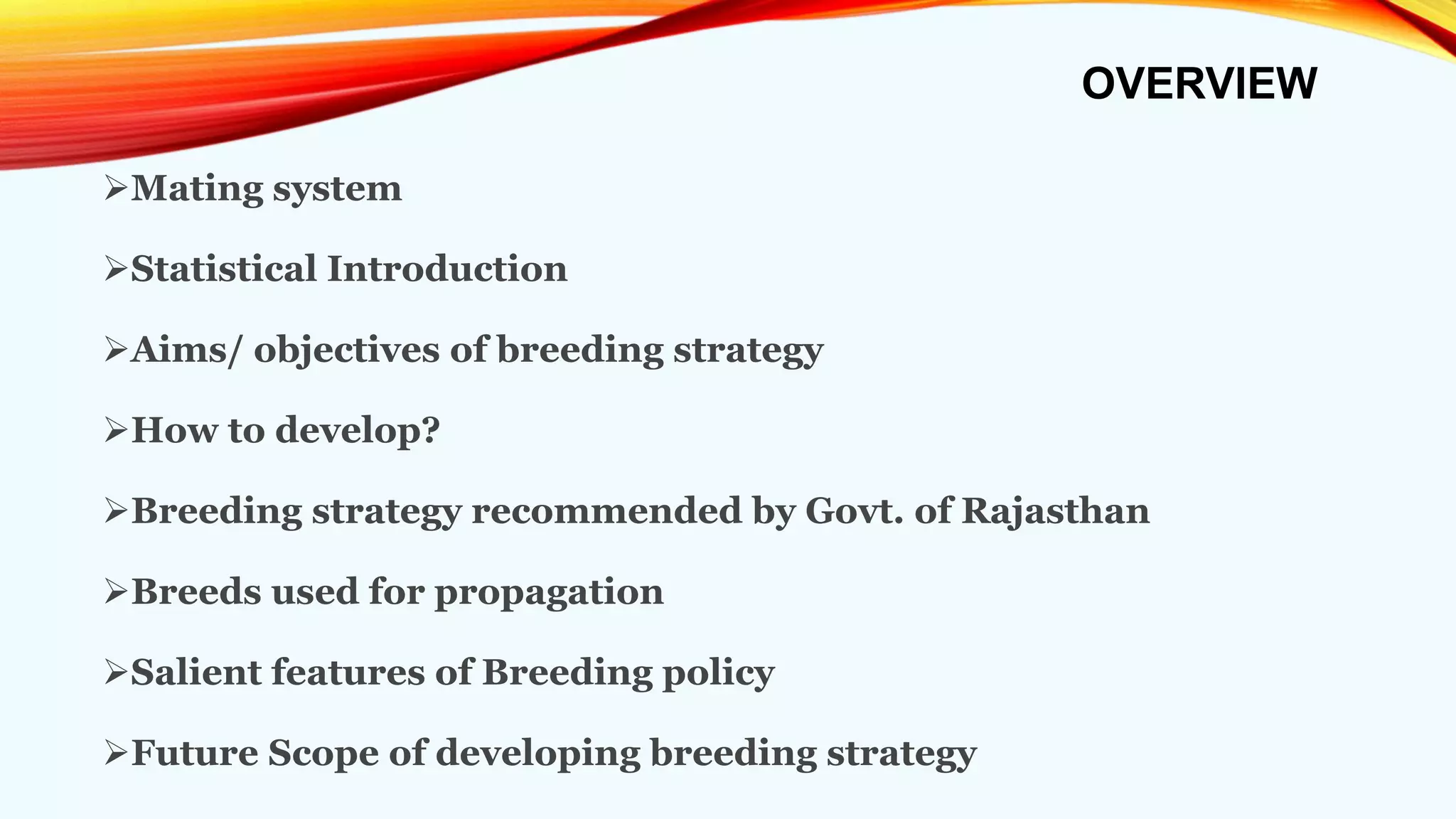
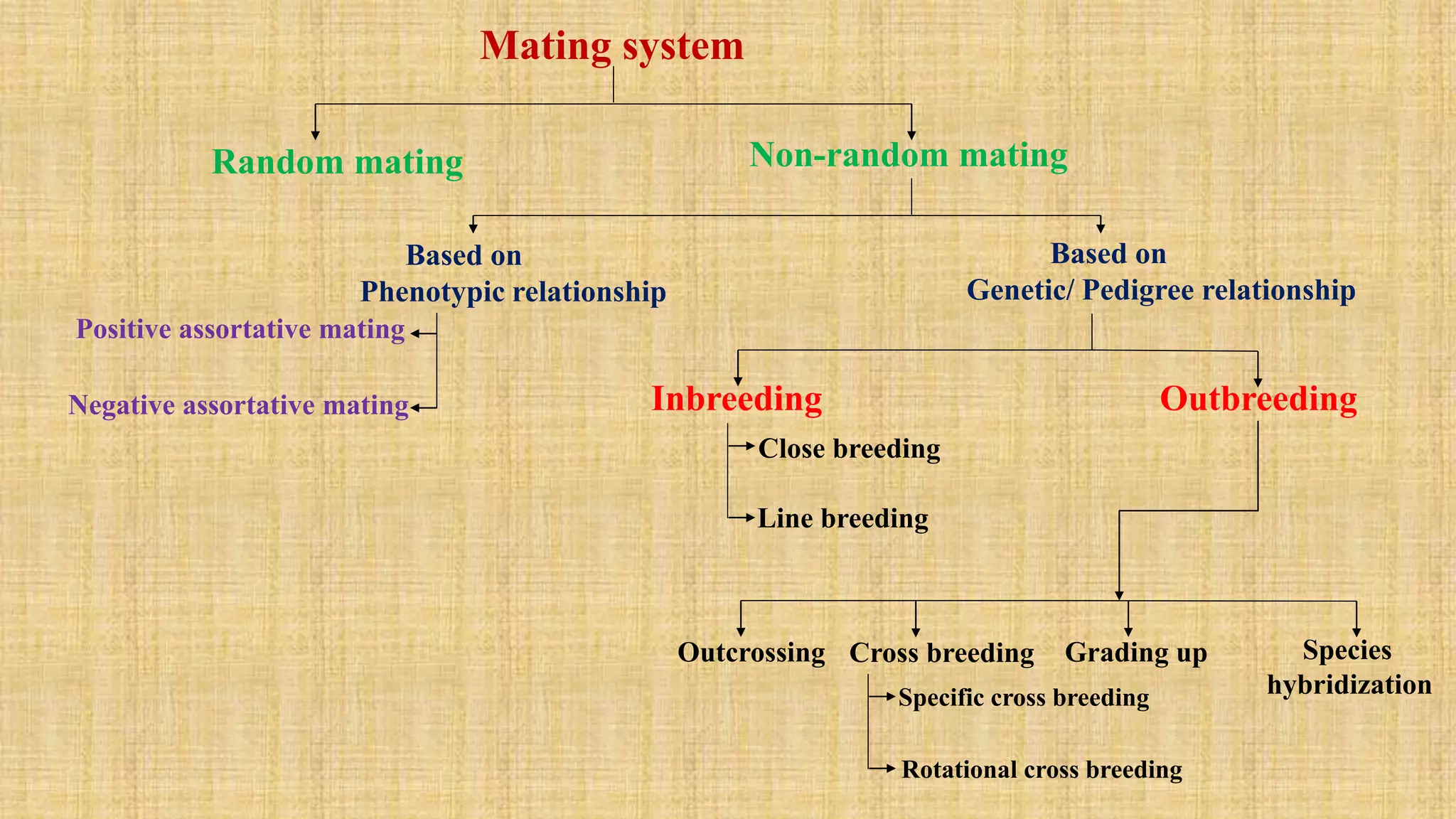
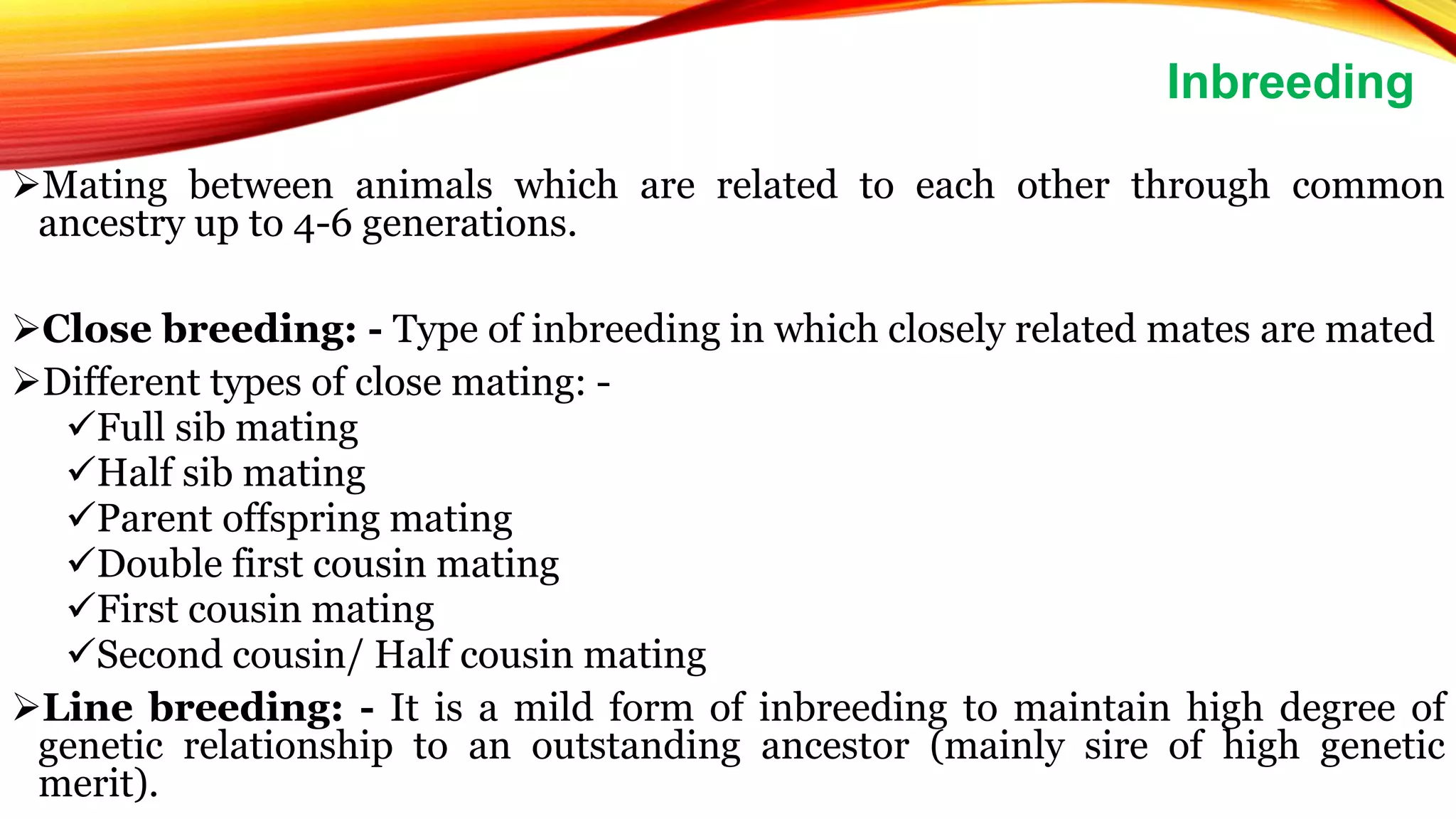


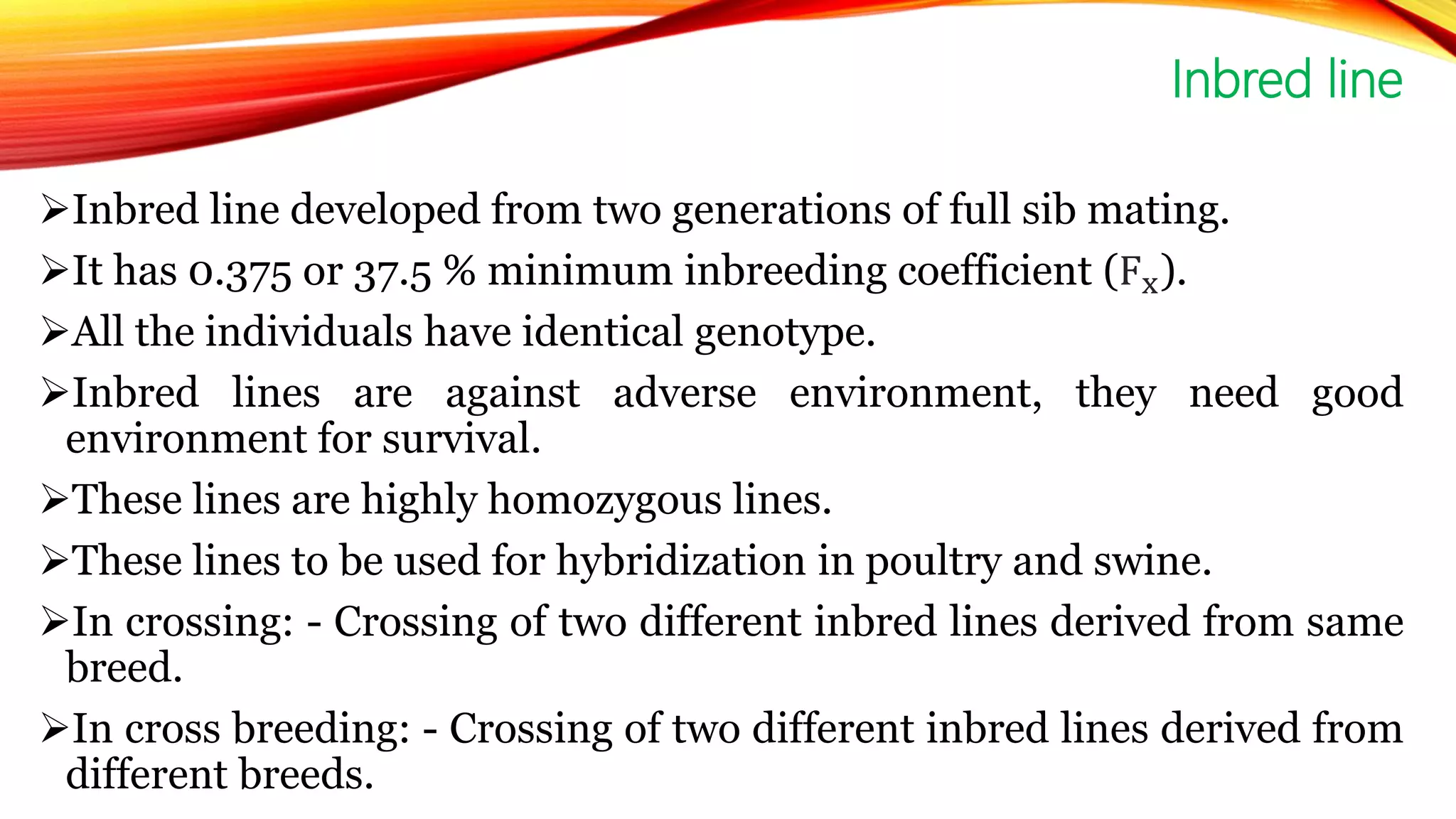

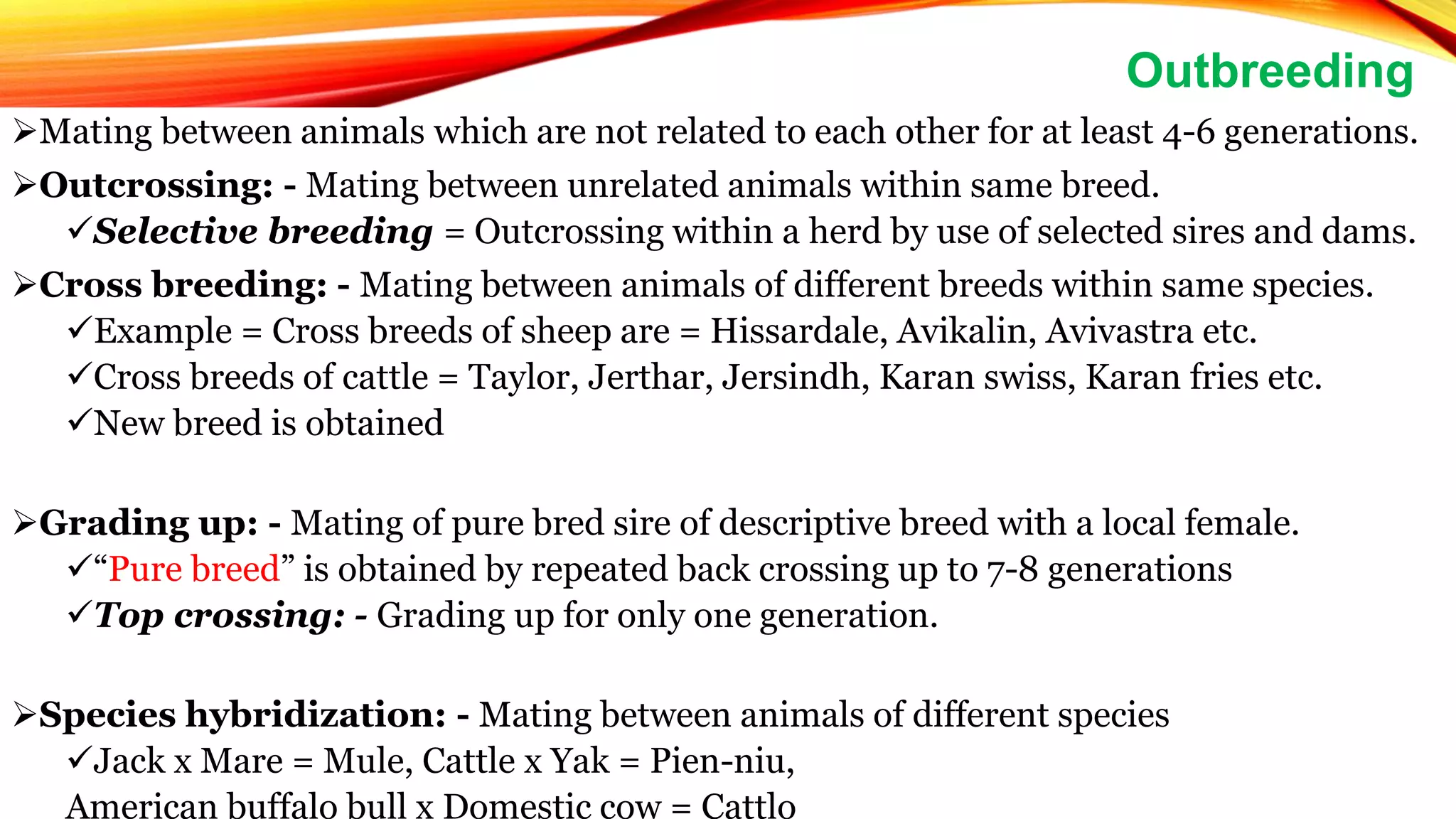



![Mating between particular breed of sire to a particular breed of dam. Resulting crossbred
offspring used for commercial purpose.
1. 2-breed specific crossing: - Two purebred animals are mated together and produce
crossbred offspring. (A x B = AB) (A is male, B is female and AB is crossbred)
Crossbred progeny F1 do not used in breeding programme.
Crossbred progeny shows 100 % individual heterosis.
2. Back crossing: - Mating of F1 crossbred to one of the two parental breeds. [A
x AB = A(AB)]
To exploit maternal heterosis (because of more importance), back crossing between
crossbred female to purebred parental male.
It utilizes half individual and full maternal heterosis.
3. 3-breed crossing: - Mating of F1 crossbred animal to a third breed. [C x (AB) = C(AB)]
To exploit maternal heterosis, mating between crossbred female to third purebred male.
It utilizes full individual and full maternal heterosis.
4. 4-breed cross: - Crossing of crossbred female produced by crossing of two breeds with
crossbred male produced by crossing of other two breeds. {(AB) x (CD)}
It exploits individual, maternal and paternal heterosis.
Specific cross breeding system](https://image.slidesharecdn.com/creditseminarjayeshvyas-copy-210407182608/75/Mating-System-and-Livestock-Breeding-Policy-14-2048.jpg)
![It is a specific cyclic pattern of rotating the use of sire breeds on crossbred females (from a
preceding cross).
1. 2-breed rotational crossing: - F1 crossbred females (AB) are mated back to male (A) of one of
parental breeds. In next generation, the crossbred females [B(AB)] are mated to sire of breed
B.
Sire from breeds A and B are mated alternatively on successive generations of crossbred
females.
Loss of one-third individual and maternal heterosis is seen.
2. 3-breed rotational crossing: - steps
Base generation: A (male) and B (female) breeds are mated to produce F1 crossbred (AB).
1stgeneration: F1 crossbred female (AB) are mated to male to male of third breed C.
2nd generation: Three breed crossbred females are mated to male of 1st breed (A).
Mating of sires from each of three breeds on crossbred females in succession.
After 7-8 cycles of rotational crossing percentage of inheritance from three breeds:
57 % inheritance from last sire breed
29 % inheritance from previous sire breed
14 % inheritance from third breed
Rotational cross breeding system](https://image.slidesharecdn.com/creditseminarjayeshvyas-copy-210407182608/75/Mating-System-and-Livestock-Breeding-Policy-15-2048.jpg)
